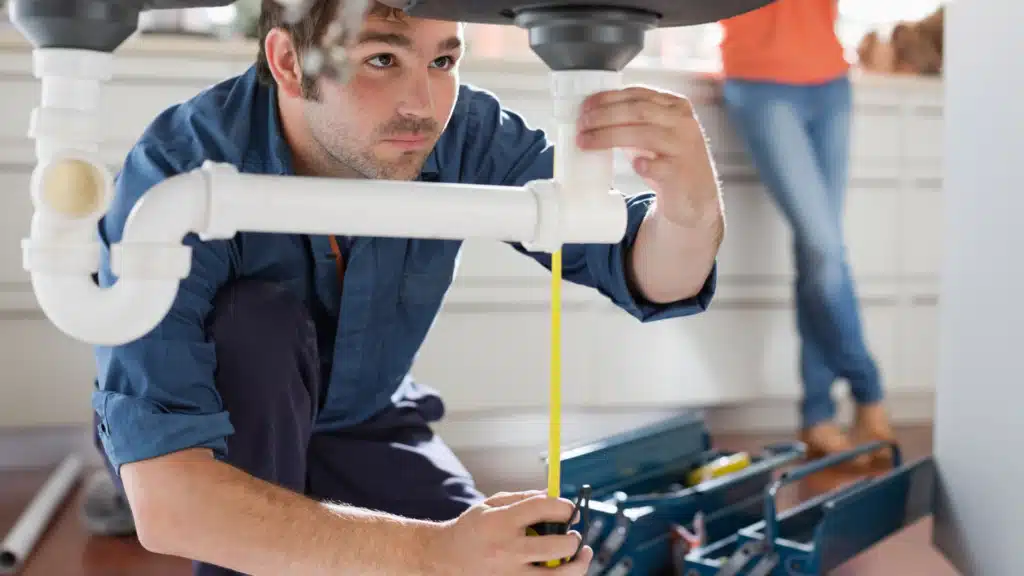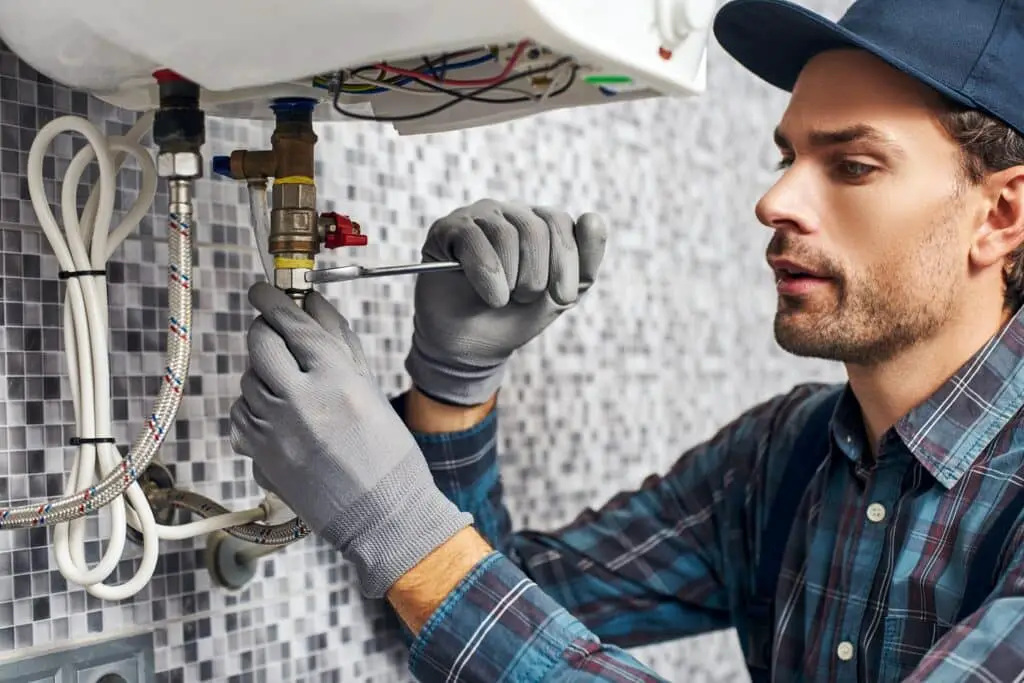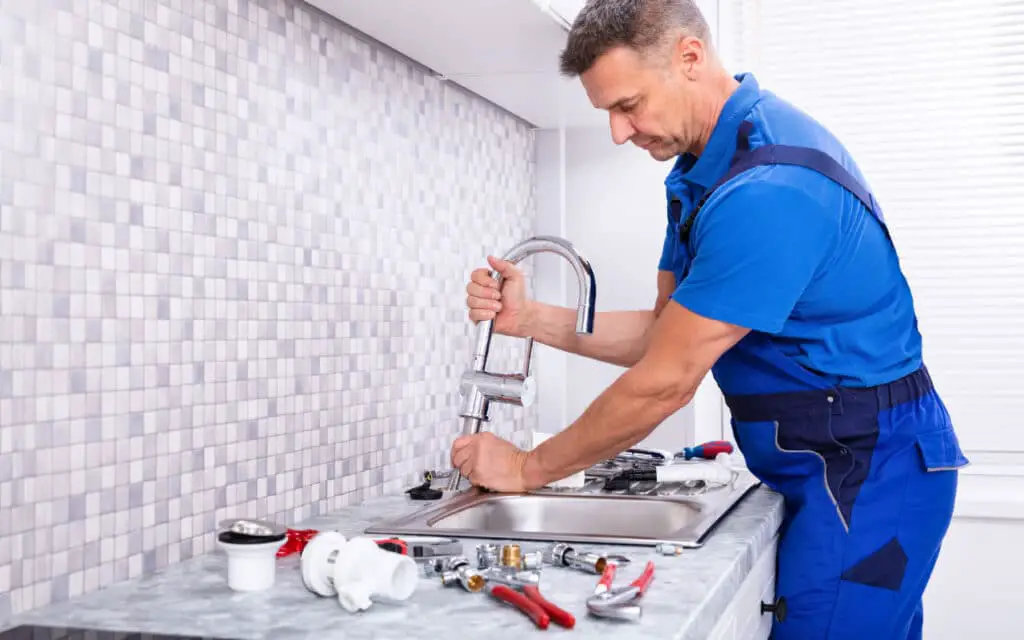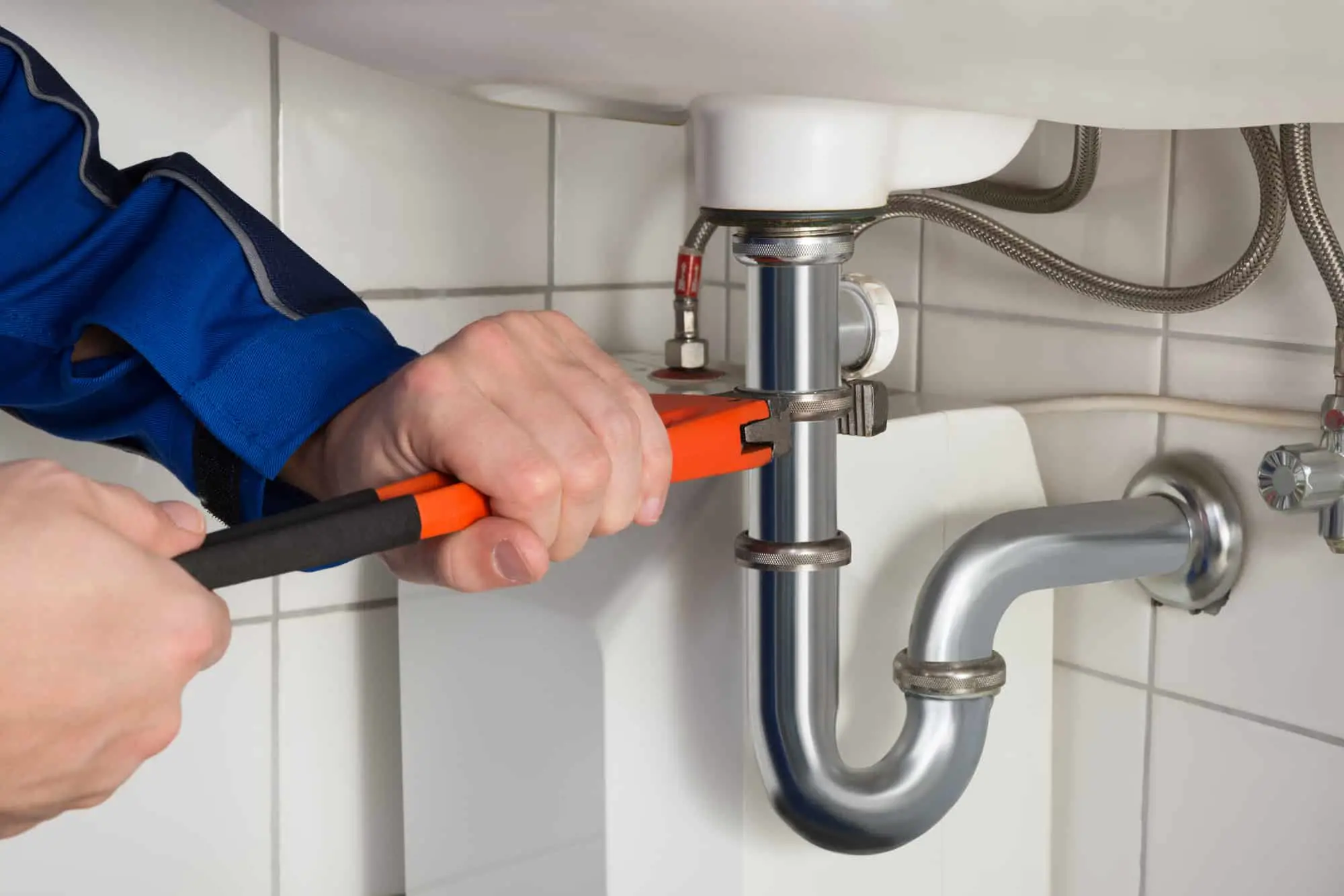How Much To Replace Plumbing In House
Introduction
How Much To Replace Plumbing In House: The plumbing system in a house plays a crucial role in providing clean water supply and efficient wastewater disposal. However, over time, plumbing components can deteriorate, leading to leaks, clogs, and other issues that may necessitate replacement. Understanding the cost of replacing plumbing in a house is essential for homeowners looking to undertake this significant undertaking. The cost of replacing plumbing in a house can vary significantly depending on several factors.
The size and layout of the house, the extent of the plumbing system, and the materials used all contribute to the overall expense. Additionally, the location and accessibility of the plumbing infrastructure can influence the cost of labor involved. In general, the replacement of indoor plumbing in a house involves the removal and installation of pipes, fixtures, and fittings. This may include replacing old, corroded pipes with new ones, upgrading fixtures to more efficient models, and ensuring compliance with local building codes.
The complexity of the project, such as the need for extensive wall or floor demolition, can also impact the cost. While the cost of replacing plumbing in a house can be a significant investment, it is crucial to prioritize the safety and functionality of the plumbing system. Ignoring plumbing issues or delaying necessary replacements can lead to further damage, increased water bills, and potential health hazards.

How Often Do You Need To Replace Plumbing?
Brass pipe systems usually last between 40 and 70 years. Copper lasts more than 50 years. Galvanized steel lasts 20 to 50 years.
Copper pipes are common and last between 50 and 70 years. Galvanized steel pipes rust, so you don’t see as many of them as brass pipes. In sewer and trash systems, PVC lines last 25 to 40 years. These are just estimates; there are a number of things that can make pipes need to be replaced sooner. Hard water leaves behind mineral deposits and rust that shorten the life of pipes.
Extreme changes in temperature, bad fitting, and frequent blockages and leaks all make damage worse. Regular upkeep and inspections can find problems early and extend the life of a plumbing system. If you live in an older home, you should have a plumber check the lines for wear and corrosion on a regular basis.
What Type Of Plumbing Lasts The Longest?
Drainage pipes are often made of cast iron or polyvinyl chloride, or PVC. Cast iron will last anywhere from 75-100 years while PVC wins the award for longest-lasting pipe material with an indefinite lifespan.
When it comes to the longevity of plumbing systems, certain materials have proven to be more durable and long-lasting than others. Here are some types of plumbing that are known for their longevity:
Copper: Copper pipes have been a popular choice for plumbing systems due to their exceptional durability.
Brass: Brass pipes are another excellent option for longevity. They are highly resistant to corrosion and can last for 50 to 70 years.
Cast Iron: Cast iron pipes are commonly used for sewage and drainage systems. They are extremely durable, resistant to fire, and have a lifespan of 80 to 100 years or more. While cast iron is a heavier and more expensive option, its longevity makes it a worthwhile investment.
PVC: Polyvinyl chloride (PVC) pipes are widely used for drainage and waste systems. They are lightweight, cost-effective, and have an estimated lifespan of 25 to 40 years. PVC pipes are resistant to corrosion, chemicals, and biological agents, making them a popular choice for residential and commercial applications.
Is It Hard To Change Plumbing?
Relocating plumbing can be a time consuming and hard work. Changing plumbing can be a challenging task, particularly if you have limited experience or knowledge in plumbing systems. Here are some factors to consider when assessing the difficulty of changing plumbing:
Skill and Knowledge: Plumbing requires a certain level of expertise and understanding of the system’s components, connections, and regulations. If you are unfamiliar with plumbing practices, it can be challenging to navigate the process effectively and ensure proper installation.
Tools and Equipment: Changing plumbing often requires specialized tools and equipment, such as wrenches, pipe cutters, and soldering or crimping tools. Acquiring and properly using these tools can be daunting for individuals who are not accustomed to plumbing work.
Access and Space: Depending on the location of the plumbing system, accessing the pipes and fixtures can be difficult. Tight spaces, cramped corners, or concealed areas may pose challenges when attempting to remove or install new plumbing components.
Building Codes and Permits: Plumbing work typically needs to comply with local building codes and regulations. Familiarizing yourself with these requirements and obtaining any necessary permits can add complexity to the process.
Time and Patience: Changing plumbing can be time-consuming, especially for larger projects. It may involve shutting off the water supply, removing old fixtures or pipes, installing new ones, and testing the system for leaks. Patience and attention to detail are essential to ensure a successful outcome.
How Long Does Pvc Plumbing Last?
Approximately 100 years
As one of the most-used plumbing materials, PVC pipe is known for being very durable and long-lasting. In fact, PVC pipes last approximately 100 years. Of course, there are various factors that determine just how long specific PVC pipes will survive, including what it’s exposed to and how it’s installed.
PVC (polyvinyl chloride) plumbing has a relatively long lifespan compared to some other materials commonly used in plumbing systems. When installed properly and under normal conditions, PVC pipes can last for several decades. The estimated lifespan of PVC plumbing is generally around 25 to 40 years.
There are several factors that can influence the longevity of PVC plumbing:
Quality of PVC: The quality and grade of PVC used can affect its durability. Higher-quality PVC pipes that meet industry standards and are properly manufactured tend to have a longer lifespan.
Installation: Proper installation is crucial for the longevity of PVC plumbing. Adequate support, correct sizing, and appropriate joint connections ensure the pipes are securely in place and can resist stress or movement.
Exposure to Sunlight: PVC pipes are susceptible to degradation when exposed to direct sunlight over an extended period. If PVC plumbing is used outdoors or exposed to UV rays, it is recommended to protect the pipes with insulation or UV-resistant coatings to extend their lifespan.
Chemicals and Temperature: PVC pipes are resistant to many chemicals and can withstand a wide range of temperatures. However, exposure to harsh chemicals or extreme temperature fluctuations can accelerate deterioration and shorten the lifespan of the pipes.
Regular maintenance and inspections can help identify any signs of wear, leaks, or damage in PVC plumbing. Prompt repairs and addressing any issues can help extend the lifespan of the system.
When Should I Replace My Old Plumbing?
Unless there is a serious problem, you should not have to replace them. Galvanized steel pipes can last up to 100 years, brass pipes can as well, and copper pipes can last up to 80 years. If you notice a problem with leakage, contact a local plumber who can tell you if they need a replacement.
Knowing when to replace old plumbing is essential to maintain the integrity and functionality of your plumbing system. While the lifespan of plumbing can vary depending on factors like material, maintenance, and usage, there are some signs that indicate it may be time for replacement:
Age:
If your plumbing system is approaching or exceeding its expected lifespan, it’s wise to consider replacement. Different materials have different lifespans, but as a general guideline, copper, brass, and galvanized steel pipes may need replacement after 50 to 70 years, while PVC pipes can last around 25 to 40 years.
Frequent Leaks or Repairs:
If you find yourself repeatedly dealing with leaks, bursts, or other plumbing issues, it may indicate that your pipes are deteriorating and becoming unreliable. Frequent repairs can become costly and disruptive, making replacement a more cost-effective and long-term solution.
Corrosion or Rust:
Corrosion is a common problem with aging plumbing systems, particularly with galvanized steel or iron pipes. Signs of corrosion include discolored water, stains, or visible rust on the pipes. Corrosion weakens the pipes and can lead to leaks or bursts, indicating the need for replacement.
Reduced Water Pressure:
If you notice a significant decrease in water pressure throughout your home, it could indicate deteriorating pipes. Mineral buildup, corrosion, or blockages within the plumbing system can restrict water flow, and replacing the pipes may be necessary to restore proper water pressure.
Water Quality Issues:
Old plumbing can affect water quality. If you notice changes in the taste, odor, or appearance of your water, it may be due to corrosion, rust, or contaminants leaching from aging pipes. Upgrading your plumbing system can improve water quality and ensure the health and safety of your household.
Renovations or Upgrades:
If you’re planning a major renovation or upgrading your fixtures and appliances, it’s a good opportunity to consider replacing the plumbing system. Upgrading the plumbing ensures compatibility with modern fixtures, improves efficiency, and avoids potential issues in the future.
What Is The Healthiest Plumbing?
Copper pipes
Copper pipes are one of the safest and most popular choices for drinking water pipes, and for good reason. Naturally occurring element that is found in rocks, soil, and water. It is also an essential trace element in the human diet. Copper is non-toxic and has been used in plumbing systems for centuries.
When it comes to the healthiest plumbing, there are a few factors to consider, including water quality, environmental impact, and the absence of harmful substances. While different materials have their own advantages and considerations, two common choices for healthy plumbing are copper and PEX (cross-linked polyethylene).
Copper plumbing is widely recognized for its health benefits. Copper has natural antimicrobial properties, which means it helps inhibit the growth of bacteria and other microorganisms in the water supply. It is also a durable and long-lasting material that does not leach harmful substances into the water. Copper pipes have been used for decades and are a popular choice for potable water supply systems.
PEX plumbing is another option known for its health-conscious characteristics. PEX pipes are made from a flexible plastic material that is resistant to corrosion and doesn’t require soldering or glues for installation. It is also known for its resistance to chlorine and scale buildup, making it suitable for areas with harsh water conditions. Moreover, PEX pipes are generally considered safe and do not leach harmful chemicals into the water.

How Long Does It Take To Replace The Plumbing In A House?
A house’s size, plumbing system complexity, and extent of replacement affect how long it takes to replace its plumbing. A comprehensive plumbing replacement usually takes many days to weeks. Discussing the timeline with your plumber helps them give a more realistic quotation depending on your needs.
The size of the house, the intricacy of the plumbing system, the amount of the repair, and the number of professionals working on the project all affect how long it takes to replace the plumbing. Some general thoughts:
Scope of Work: The time required for a complete plumbing replacement will be significantly longer compared to replacing specific sections or fixtures. A complete replacement involves removing old pipes, installing new ones, connecting fixtures, and testing the system for leaks.
House Size: The size of the house plays a role in the duration of the project. Larger houses with more plumbing fixtures and a complex layout will naturally take longer to replace compared to smaller houses.
Access to Plumbing: The accessibility of the existing plumbing system also affects the timeline. If the pipes are easily accessible, it speeds up the removal and installation process. However, if the plumbing is concealed behind walls or in hard-to-reach areas, it may take longer to access and replace.
Team Size: The number of professionals working on the project can impact the time required for completion. A larger team can divide the tasks and work concurrently, which can expedite the process.
Unforeseen Issues: During the plumbing replacement, unforeseen issues such as unexpected damage or hidden problems may arise. These can prolong the project as additional repairs or modifications are needed.
Are There Any Alternatives To Replacing The Plumbing In A House?
In some cases, there may be alternatives to complete plumbing replacement, depending on the specific issues you’re facing.
Yes, there are alternatives to replacing the plumbing in a house that can be considered depending on the specific circumstances. Here are a few alternatives to complete plumbing replacement:
Pipe relining can cure leaks, improve flow, and extend plumbing system life. This method works for localized leaks, damaged joints, and broken fixtures.
Maintenance and Upgrades: Regular maintenance and rapid repairs can extend the plumbing system’s lifespan. Flushing pipes, removing blockages, fixing leaks, and upgrading fixtures can boost performance and prevent significant issues. Professional plumber inspections can detect concerns early and enable timely repairs or upgrades.
Water Treatment Systems: Installing water treatment systems can fix water quality issues without overhauling the plumbing infrastructure.

Conclusion
Replacing the plumbing in a house is a substantial investment, but it is a necessary one to ensure the proper functioning and safety of the plumbing system. The cost of replacing plumbing in a house can vary depending on factors such as the size and layout of the house, the extent of the plumbing system, and the materials used. It is crucial for homeowners to consult with professional plumbers or obtain multiple quotes from reputable contractors to accurately determine the cost.
While the expense of replacing plumbing may seem daunting, it is important to consider the long-term benefits. Upgrading old, corroded pipes and fixtures can prevent leaks, reduce water wastage, and improve water pressure, leading to lower utility bills and increased efficiency. Additionally, replacing plumbing components can help avoid costly repairs and potential health hazards associated with water damage or contamination. It is also essential to recognize that delaying necessary plumbing replacements can result in further damage and increased costs down the line.
Ignoring plumbing issues or opting for temporary fixes can lead to more extensive repairs or even structural damage to the house. By prioritizing the safety and functionality of the plumbing system and investing in its replacement, homeowners can enjoy peace of mind and a reliable water supply. It is advisable to work with experienced professionals who can assess the existing plumbing system, provide accurate cost estimates, and ensure compliance with building codes.








